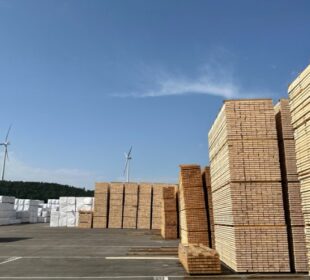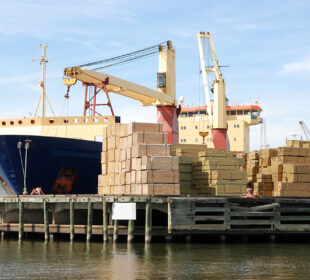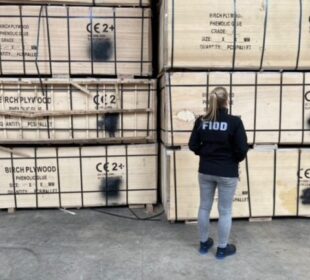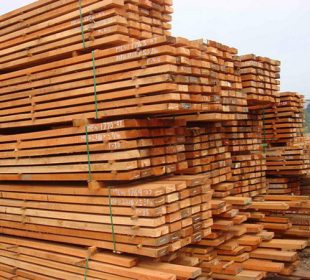Recovery in EU wood imports continues in 2019 The total value of EU28 imports of wood products was 20.51 billion euro in 2019, 4% more than in 2018. This followed an increase of 5% to 19.7 billion euro in 2018. In 2019 EU28 import value was at the highest level since 2008 just before the global financial crises (Chart 1).
 The rise in imports into the EU occurred despite unfavorable exchange rates and weakening economic growth during 2019, particularly in the second half of the year. According to the EU Winter 2020 Economic Forecast published on 13 February, GDP growth in the EU27 (i.e. excluding the UK) slipped to 1.5% in 2019, down from 2.1% in 2018. A further slight fall to 1.4% is projected for 2020.
The rise in imports into the EU occurred despite unfavorable exchange rates and weakening economic growth during 2019, particularly in the second half of the year. According to the EU Winter 2020 Economic Forecast published on 13 February, GDP growth in the EU27 (i.e. excluding the UK) slipped to 1.5% in 2019, down from 2.1% in 2018. A further slight fall to 1.4% is projected for 2020.
The slowing economy fed through into a 4% decline in the value of the euro against the U.S. dollar last year following an 8% fall the previous year. The British pound dipped to an all-time low against the US dollar and other top currencies in the middle of 2019 as concerns mounted over Brexit, although it did rally to some extent towards the end year.
On the other hand, EU currencies remained reasonably strong relative to currencies in several key Eastern European supply countries, including Ukraine, Russia, and Turkey. These exchange rate fluctuations generally favored EU imports from Eastern Europe and acted as a drag on imports from North America and Asia.
EU wood furniture imports rise 10% in 2019
Considering individual products (Chart 2), the value of EU imports of wood furniture increased by 10% to 7.07 billion euro in 2019 after a 1% fall in 2018. After flat lining in 2018, imports from China, the EU’s largest external furniture supplier, increased throughout 2019.
Imports from Turkey, the second largest external supplier, also made some gains, but not as large as those made by several tropical suppliers including Indonesia, Vietnam, Malaysia and India. Furniture imports from Bosnia were weakening throughout the year, but imports from Serbia were rising.
EU imports of sawn wood declined 2% to 3.57 billion euro in 2019, losing some of the gains made the previous year when imports increased 10%. After a strong first quarter, sawn wood imports slowed dramatically from April 2019 onwards.
During this period, the pace of sawn wood imports fell rapidly from all four of the leading suppliers, Russia, Belarus, Ukraine, and the United States. Of tropical sawn wood suppliers, imports from Cameroon and Brazil increased, partly offset by a continuing fall in imports from Malaysia.
EU imports of panels (mainly plywood) decreased 9% to 2.83 billion euro in 2019, wiping out the 8% gain made the previous year and the first fall in imports of this commodity for 6 years. Imports from Russia and Belarus, which experienced particularly dramatic growth in previous years, slowed throughout 2019.
Imports from China finished the year 2019 up on the previous year but were weakening in the second half of 2019. Imports from nearly all the other main suppliers – including Brazil, Ukraine, Chile and the US – were weakening during 2019. Indonesia fared better than most, a strong rise in plywood imports from the country in the first half offsetting a slow down towards the end of the year.
The long-term rise in EU imports of energy wood continued in 2019 with annual import value rising 13% to 2.84 billion euro building on 20% growth the previous year. There was another sharp increase in EU imports of energy wood from the United States in 2019 (now dominated by pellets), to reach nearly 1.3 billion euro, with most destined for the UK. Imports of energy wood also increased sharply from Russia, to nearly 0.5 billion euro, and Belarus, mainly destined for continental EU. Imports were stable from Canada and Ukraine.
EU imports of logs declined 9% to 660 million euro in 2019, after rising 3% the previous year. The downturn was due partly to a slowdown in imports from Russia in the second half of 2019, while all EU imports of logs from Belarus ceased in 2019 after tightening of log export controls in the country.
After rising 3% in 2018, EU imports of wood flooring made another 3% gain to 610 million euro in 2019.
Flooring imports from China, by far the largest external supplier accounting for around two thirds of the total, continued to rise strongly in the first half of 2019 but began to lose ground in the second half of the year, while imports from Ukraine continued to make gains throughout 2019. Imports from Switzerland, Malaysia and Indonesia were sliding throughout the year.
EU imports of ‘other’ joinery products (i.e. excluding flooring and mainly comprising doors and laminated wood for window frames and kitchen tops) increased 12% to 800 million euro in 2019, after flat lining the previous two years. There was particularly strong growth in imports of this commodity group from Indonesia, building on gains made in the previous year, while imports from China and Malaysia also made ground.

















